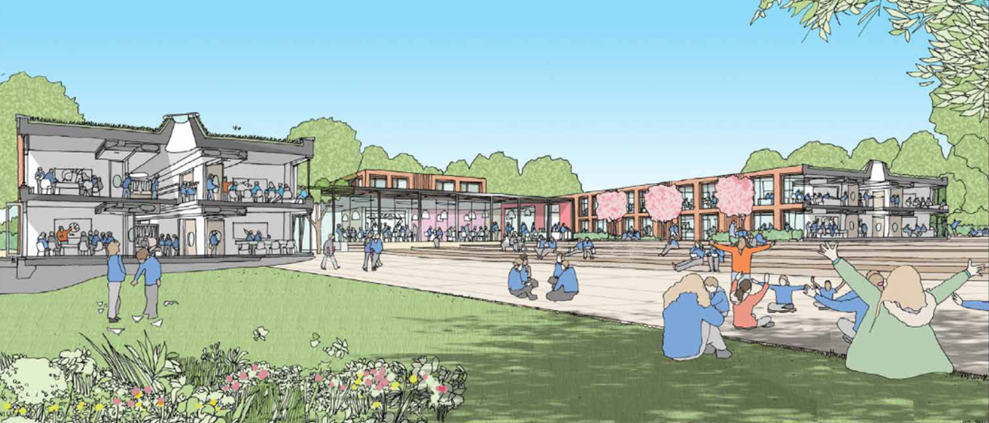
School statistics and data collection
Find out how many school there are in the county and information on pupil numbers.
How many schools are there in Worcestershire?
Last updated May 2025
| School Phase and Age Ranges | LA Maintained Schools | Academies | Free Schools | Total by Phase |
|---|---|---|---|---|
| Nursery Schools | 1 | 0 | 0 | |
| Nursery Total | 1 | 0 | 0 | 1 |
| All-Through (2-18 years) | 0 | 0 | 1 | |
| All-Through Total | 0 | 0 | 1 | 1 |
| Primary Schools - First Schools | 38 | 26 | 0 | |
| Primary Schools - Primary Schools | 44 | 68 | 1 | |
| Primary Total | 82 | 94 | 1 | 177 |
| Middle Schools - Deemed Primary | 2 | 2 | 0 | |
| Middle Schools - Deemed Secondary | 4 | 10 | 0 | |
| Middle Total | 6 | 12 | 0 | 18 |
| Secondary Schools (10-18 years) | 0 | 1 | 0 | |
| Secondary Schools (11-16 years) | 1 | 6 | 0 | |
| Secondary Schools (11-18 years) | 2 | 13 | 0 | |
| Secondary Schools (12-18 years) | 0 | 1 | 0 | |
| Secondary Schools (13-18 years) | 0 | 6 | 0 | |
| Secondary Total | 3 | 27 | 0 | 30 |
| Special Schools | 4 | 5 | 0 | |
| Special Total | 4 | 5 | 0 | 9 |
| Pupil Referral Units (PRUs) / Alternative Provision (primary) | 2 | 0 | 1 | |
| Pupil Referral Units (PRUs) / Alternative Provision (secondary) | 1 | 1 | 2 | |
| PRU Total | 3 | 1 | 3 | 7 |
| Total Number of Schools in Worcestershire | 99 | 139 | 5 | 243 |
School Forecast Data
Known pre-school children
Each year the Health Authority provides the Council with data on pre-school children known to be registered in Worcestershire. This data helps the Council to anticipate rises and falls in the number of children starting school and to plan the number of school places.
Download:
- Known Children Data 2024 (PDF)
- Known children data 2023 (PDF)
- Known children data 2022 (PDF)
- Known children data 2021 (PDF)
- Known children data 2020 (PDF)
This data does not represent a forecast for the demand for places at any given school.
If you require information on likely demand, please contact the Sufficiency and Place Planning team by emailing: spp@worcestershire.gov.uk
Forecast methodology
The forecasts apply historical transition patterns of take-up of school places to current number on roll data and information on live births provided by the Health Authority to forecast the number of children anticipated to attend Worcestershire Schools for the next several years. Forecasts are produced every academic year for the following September intake.
Countywide forecast
The Worcestershire Countywide Education Forecast Numbers (PDF) includes all children predicted to attend a mainstream state-funded school within Worcestershire, including maintained and academy schools.
For information on demand for places at specialist provision see SEND Sufficiency.
Education planning area
The LA divides the county into sixteen Education Districts loosely based around the main population centres. An Education District will contain one or more secondary schools and all the designated feeder schools for those schools. Catholic schools are included in the Education District in which they are located.
Download:
Education Planning Areas (EPAs) are geographical groupings of schools which are considered to be a realistic alternative to each other for children living in that area. Travel patterns, geographical spread and parental preferences are all considerations in determining EPAs.
Worcestershire includes rural areas with long distances between schools, and also urban centres where travel patterns are affected by, for example, rivers or major roads, and these factors have informed how we have sub-divided the county.
There are twenty six (26) EPAs, which correspond with the Education Districts but sub-divide some of them for more detailed forecasting and planning.
Individual school forecasts
Schools wishing to receive an individual forecast for their school or discuss pupil numbers should contact the Sufficiency and Place Planning Team.
School Number on Roll
School pupil numbers are collected nationally by the Department for Education (DfE) via the termly School Census. The School Census is a statutory return (which means that it is a legal requirement for all state-funded schools in England to supply the information) and the census dates for each academic year are the first Thursday in October, followed by the third Thursday in January and the third Thursday in May.
The School Census is the primary source of administrative data about pupils attending schools in England. The data collected is vital in supporting a number of the DfE's strategic objectives and is widely used for the purpose of improving and promoting the education or well-being of children in England. For example, the data collected helps the DfE target funding in line with Government policy.
General pupil characteristic information and data is collected on the School Census which contributes to published DfE national statistics. Anonymised data (i.e. without the pupils’ personal details) may be shared by DfE with carefully vetted and strictly controlled research partners (e.g. universities, examination boards, and other professional education organisations).
Data from the School Census is used by the DfE and the local authority for many purposes including to calculate school funding, and to plan school provision in both the short-term and further into the future by projecting past and present numbers to forecast likely numbers in the coming years.
A spreadsheet version of the Number on Roll (NOR) from each census is available on request, approximately 10 weeks after the date of the collection (e.g. data from the Autumn Census is normally available at the end of the collection period in the second week of December). Please contact the School Census Team, specifying which years and terms you are interested in. It is our intention to post NOR Summaries on the website in the future but there are currently formatting issues that prevent us doing so.
If you wish to discuss School Census data or request a more bespoke analysis, please contact the Lead Analysis - Education.
Population forecast data in Worcestershire
Download:
Related

Information on the sufficiency of education provision 0 to 25 years.

The school will be delivered by the Council and will be run by the multi-academy trust Oasis Community Learning.
 Facebook
Facebook X
X Email
Email WhatsApp
WhatsApp Messenger
Messenger